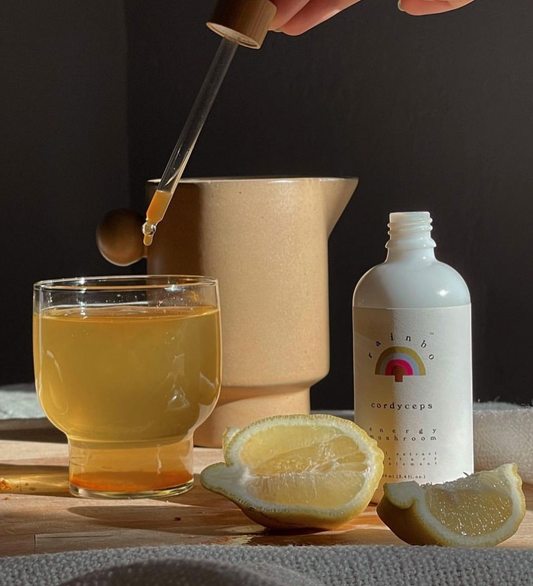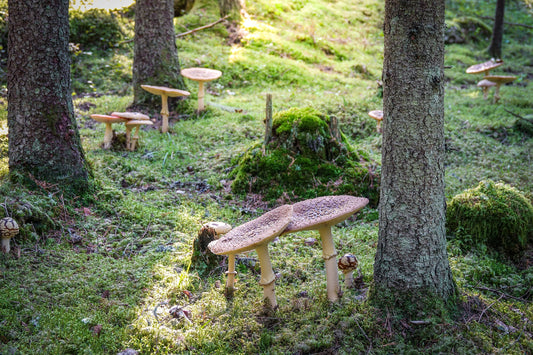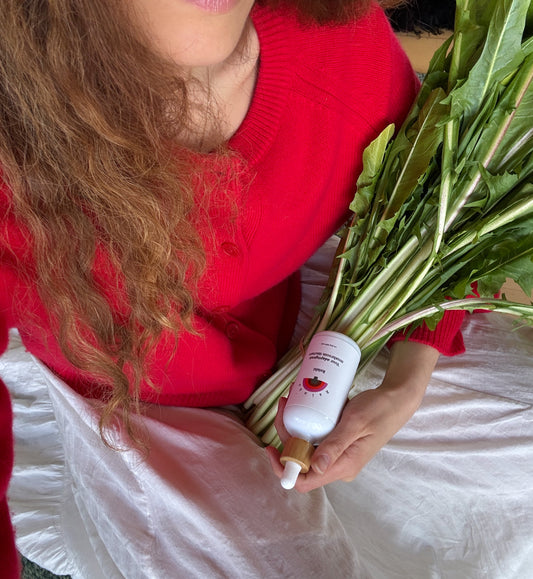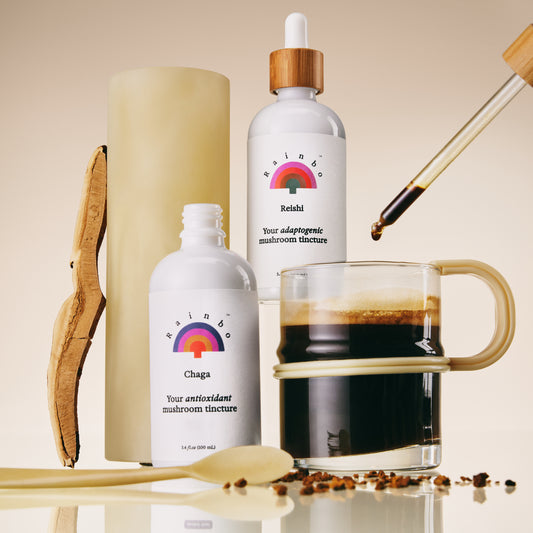Ethnomycology
What is ethnomycology?
Ethnomycology is the combination of ethnography (the study of the customs of individual peoples and cultures) and mycology (the study of fungi). More specifically, it delves into how the use of fungi differs between communities and asks questions of local knowledge, culinary and consumption practices, human ecological adaptations, and how fungi play into the human dietary, medicinal, spiritual, recreational, economic, and cognitive domains.

Why is ethnomycology important?
There are many reasons why studying ethnomycology is important. Firstly, we can study climate change via mycophilic (fungi-loving) communities, especially since understanding local ecological and mycological knowledge is pivotal for conserving ecological systems and promoting sustainable livelihoods. This is because mycorrhizal fungi have a symbiotic relationship with the roots of plants, maintaining forest masses worldwide by providing a network that connects plants and helps them share nutrients, water, and signal compounds. This network stores carbon, helping regulate the climate. By better understanding the status and changes in fungal distribution and abundance, we have a deeper insight into overall ecological well-being, providing us with more information to adapt and combat climate change.
Learn more about the network, aka the Wood Wide Web.
Secondly, people all over the world have various uses of fungi, ranging from culinary to medicinal to practical uses. Since fungi have potent therapeutic compounds such as antioxidants, proteins, carbohydrates, lipids and numerous secondary metabolites that have contributed to the revolutionary modern-day medicines such as penicillin, scientists are constantly looking at fungi for other medicines. Reaching further than medicine, fungi and mushrooms are also an important source for enzymes with industrial use, bioremediation, biofuels, cosmetics, inks, and dyes.
Learn more about how medicinal mushrooms elevate immune function.

However, most importantly, mushrooms are influential on a global scale in terms of cultures, diets, and economies. As culinary mushrooms add a lot of umami flavor, places such as Italy and France use gourmet truffles to flavour their dishes. Foraging for gourmet truffles contributes to the economy of the more rural parts of these countries where employment may be harder to come by. While these luxurious food products may affect a small population, mushroom hunting and consumption influence a much larger group of people in developing regions.
Since mushrooms have a high nutritional value, they add a substantial contribution to diet in areas where access to an abundance of food is limited, such as in rural parts of China, India, and Mexico. Furthermore, they provide income for many communities in various parts of the world, with sales occurring at international to local levels. For example, in many areas of Mexico, Africa, and Southeast Asia, many families depend on the income gained from mushroom harvesting. In premodern Europe, especially in the East, “market-women” were the main suppliers of mushrooms and vegetables. This activity continues in many of the Eastern European countries to this day, including in mycophilic Poland.
Learn about women in mycology.

Case Studies
Poland
One of the most mycophilic regions of the world, Mazovia, is located in the central-eastern region of Poland, and was categorized at the top of the mycophilia spectrum for having the longest regional list of edible mushrooms ever recorded during ethnomycological field research. While other areas such as large parts of southern and eastern Europe, Turkey, parts of Africa, Mexico, and most of Asia are mycophilic, it was in Mazovia that the largest number of fungi taxa (groups of biological classification such as species, families, genus) were ever collected. Of course, since the field of ethnomycology is still in its infancy, we cannot be certain that Mazovia is the most mycophilic region in the world. However, so far no other location has surpassed the 92 taxa mark that Mazovia has.

In this region, it was noted that men displayed slightly more knowledge regarding wild edible fungi (WEF) than women. Furthermore, on average, residents aged between 60 and 70 have the largest knowledge of WEF. The usage of WEF varies in preparation, ranging from being dried to pickled to frozen after brief boiling. For the 11 fungi taxa that are in-consumable, there exists a diversity of usage such as in fly traps, dyes, medicine, decoration, and even axle grease.
When asked about the abundance of fungi in Mazovia, most respondents observed a decrease of macro-fungi abundance during their lifetime (10-50 years), with drought being the main reason listed as to why. This goes to show that a changing climate influences the abundance of fungi and most recently has made a noticeable change within this mycophilic community.
It is no surprise that the most mycophilic region is in Poland. Fungi are very intertwined with Polish culture, ranging from the “market-women” selling mushrooms in pre-modern Europe to the many recipes that utilize mushrooms in Polish dishes. For example, Poles use Boletaceae mushrooms for stuffing pierogi and flavoring sour bread soups for their Christmas Eve dinners. Mushroom-centered dishes are also popular in the summer and autumn when they are fresh after collection, and it is common to preserve them via pickling to be enjoyed throughout the year. Mushrooms are so popular in cuisine that even one of Poland’s national dishes, Hunter’s Stew or Bigos, requires the addition of dried ceps (porcini mushrooms).

Even though mushrooms are very popular among the Polish, mycophobia (mushroom fearing) still exists due to the various poisonous mushrooms that grow in the area. In order to avoid the wrongful consumption of poisonous mushrooms, the media produces specific programs and articles devoted to correct mushroom identification. Furthermore, according to law, there is an official list of species of mushrooms that are permitted to be sold, and every mushroom seller must produce an identity card on request. 42 taxa make up this list, including a few cultivated East Asian species and the most traditionally collected species. While other species can be collected, they cannot be sold to the public.
Another contributing factor to mycophilia in Poland is that until 1999, a special lesson on mushroom identification was obligatory for fifth graders (11 year-olds). While this tradition is no longer continued, mushroom picking is an important family activity and is learned from an early age. In fact, every child and adult interviewed in three villages in Poland could recognize at least one species of WEF. And it is said that nearly everybody has foraged for mushrooms at least once in their lifetime.
Check out our mushroom foraging guide.
Kalahari Desert
Mushrooms tend to grow in wet, dark areas such as in forests. However, on certain occasions, fungi, in particular truffles, can grow in dry places such as in the Kalahari Desert of Southern Africa. In fact, the nomadic people of the Kalahari Desert have used truffles for millenia.
There are a few major differences between mushrooms and truffles. Firstly, the climates in which they grow are completely different. The former requires a lot of rainfall (at least 760mm of rain) and protection from UV, while the latter requires only 50 to 380 mm of rainfall and can grow in the harsh conditions of the desert. Secondly, mushrooms have a distinct stalk and a fragile and soft feature, while truffles have no stalk nor gills with a firm, dense, and woody feature. Overall, mushrooms tend to be more sensitive to environmental conditions such as high temperatures and dryness compared to truffles.
However, something in common that truffles have with mushrooms is the symbiotic relationship they form with surrounding plants. In fact, truffles from arid-land ecosystems enhance the host plant’s capacity to resist dry spells. Desert truffles in particular co-exist with species of the rockroses, limiting the distribution of these truffles to the availability of this plant.
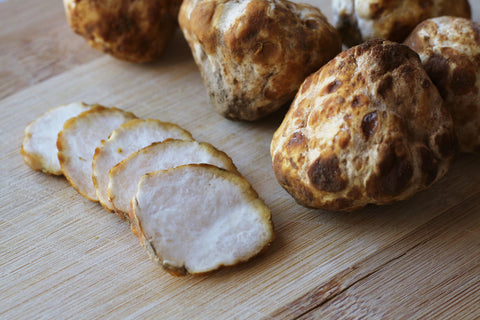
Desert truffles have been used medicinally since the early stages of civilization by the Kalahari and Saharan natives to promote health and prevent and treat diseases. They are reported to have anti-inflammatory, immunosuppressing, anti-carcinogenic, and antioxidant properties, and display antimicrobial activities.
In folk medicine, desert truffles (Terfeziaceae family) were used for the treatment of ophthalmic diseases and as aphrodisiac agents. The same truffles were used to treat skin and eye conditions such as Trichoma in Sub-Saharan Africa and the Middle East. In fact, Arab countries have used these desert truffles as folk medicine for over two millennia without any known complications, evidencing their benefits.
However, the most interesting application of these desert truffles is in mystic use. Khoisan hunters in the Kalahari desert believe that these truffles (kuuste or n’xaba) counteract the effects of poisonous arrows in shot animals, so they will refuse any food or drink other than water until the animal is confirmed to be dead. Their reasoning is that if the archer eats food, it will give the wounded animal strength and health to escape. Therefore, they especially reject eating kuuste or n’xaba because it may counteract the poison in the animal. Additionally, the hunters keep a piece of kuuste or n’xaba as an antidote in case they are accidentally wounded by a poisonous arrow.
The longstanding use of desert truffles makes a lot of sense. They require very little input such as water or organic matter in order to sprout. Furthermore, they are very nutritious, coming in second after maize for energy content (kj) on a weight-for-weight basis, scoring considerably higher than 22 other vegetables. In addition, these truffles have considerably higher fat, phosphate, and potassium contents than maize or other vegetables, making it a wise choice for a more nutritious diet.
Kalahari truffles are now harvested for sale rather than just for personal consumption. However, they are nowhere near as expensive as European truffles. While harvesters in rural communities in Botswana earn cash by selling truffles to intermediaries and processors, it is theorized that they could earn more if they had better access to technology—even if it was low-level.
Unfortunately, due to the disturbance of the sandy soils by cattle and goats where these truffles grow, truffle harvest is steadily declining, endangering an important aspect of the local diet. Therefore, it is necessary to study further into restoring production and developing ways to enable the rural communities to harvest these prized truffles.
Mesoamerica
Mushrooms are very important to the spiritual practice of indigenous people of Mexico among other parts of Mesoamerica. In fact, the genus Psilocybe (the genus of mushrooms that are known to contain psychoactive compounds) occurs commonly in Mexico, with 53 known hallucinogenic species, being the most important and diverse group of sacred mushrooms used by Mexican indigenous cultures.
Learn about the difference between shrooms and mushrooms.
Although usage of hallucinogenic mushrooms was common among different indigenous groups in Mesoamerica, prior to the Spanish conquest, a lot of the scant information we know stems from the “rediscovery” of these customs by Westerners in the 1950’s and via archaeological, ethnohistorical, and ethnographic evidence. Unfortunately, little is known about the pre-contact history of the sacred mushrooms as the current ceremonies have been strongly influenced by five centuries of contact with Catholicism. With the new wave of recreational plant medicine users and tourists, the ceremonies have changed even further, becoming a commercialized and a tourist attraction.

However, what we do know about the pre-Columbian Mesoamerican cultures is that they used hallucinogenic substances such as sacred mushrooms, peyote, and tobacco in magical, therapeutic, and religious rituals. The purpose of using these mind-altering natural medicines was to enter a trance to attain greater enlightenment and open-mindedness. This state included temporal and spatial disorientation, a sensation of ecstasy and inner peace, hallucinations of vivid colours, tendency towards introspection, and an impression of being one with nature and with the gods. These ceremonies were led by mystic priests or shamans, who acted as a mediator between the physical and spiritual worlds. During the shaman’s journey, he would make contact with the spirits to acquire knowledge about plants, diagnose diseases, or ensure a good harvest or rainy season before returning to his body in the physical world.
Not only do these psychoactive mushrooms play a role in mystic life via shamans, codices such as the Dresden and Madrid depict mushrooms in Mayan scenes of human sacrifice. Additionally, mind-altering mushrooms were used in the coronation ceremonies of numerous Aztec emperors such as Tizoc, Ahuízotl, and Moctezuma II. This goes to show that these mushrooms were used for sacred ceremonies that traversed ethnic groups and eras.
Nowadays, rituals with mushrooms incorporate Catholic rites, such as reciting Christian prayers after harvesting at dawn and during the new moon and blessing the mushrooms in church. The ceremony is held at night to minimize distractions and is observed under the guidance of a shaman or older experienced person (male or female) often in the guide’s home in front of a Catholic altar. By purifying and placing the mushroom on an altar, the shaman is able to diagnose and treat the participants’ illnesses.

The mushrooms are counted in “male-female” pairs (using a single species for a given ceremony), and participants traditionally ingest up to six pairs of mushrooms. However, for those who are on a tourist trip, they may be required to pay more for a higher dose. The mushrooms are taken on an empty stomach after being placed in a gourd, usually following abstinence of sex and alcohol.
However, magic mushrooms are not the only exposure to fungi that people in Mesoamerica have. In fact, a large source of local nutrition comes from fungi. Additionally, many people in Mexico rely on income from collecting and selling mushrooms to support their families. Furthermore, on a daily basis, women in Mexico are experimenting with species that were previously not recognized as edible in their communities, generating new knowledge. Recently in Tlaxcala, Mexico, a cosmetic use for Lyophyllum was discovered, when the local women discovered that it softened their skin while soaking this edible mushroom.
So What?
Each day, new uses of fungi are being explored, while there exists a large body of knowledge to learn from the rural communities where fungi grow. In order to fully appreciate and understand the benefits of fungi, we must take the initiative to learn from mycophilic communities. Not only will it empower them and help their economies by supporting their small businesses, it will also help us gain the tools needed to become a healthier society—in terms of diet supplementation for treatment and prevention of diseases to gaining an understanding of the network of ecosystems that make for a healthier Earth.

